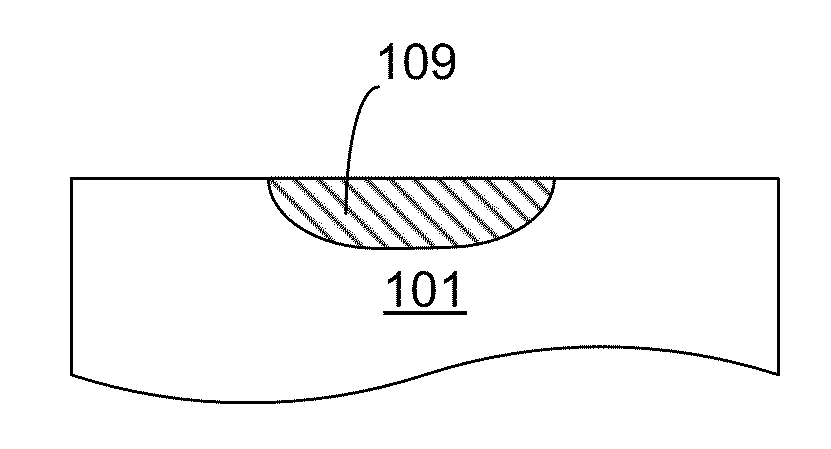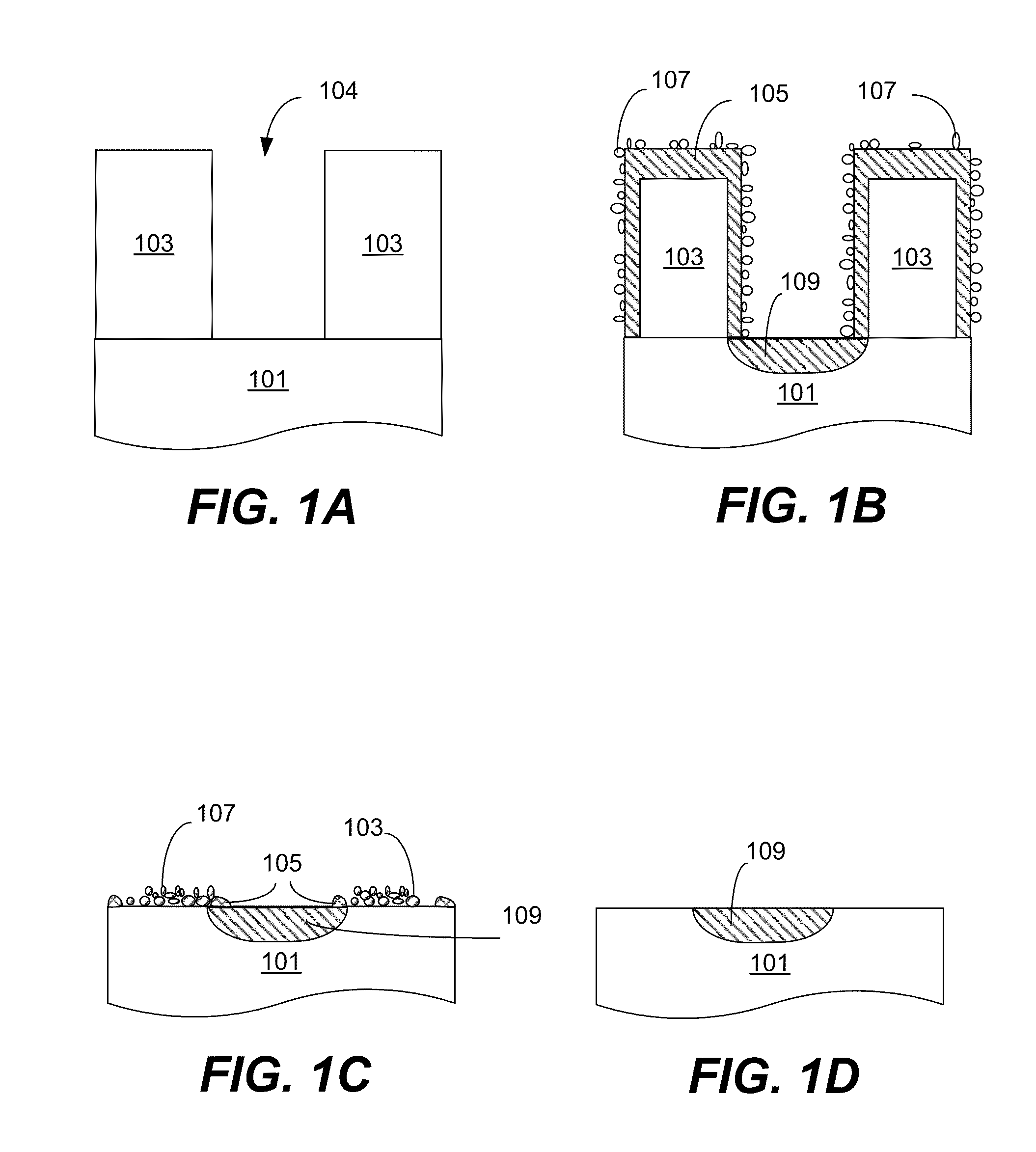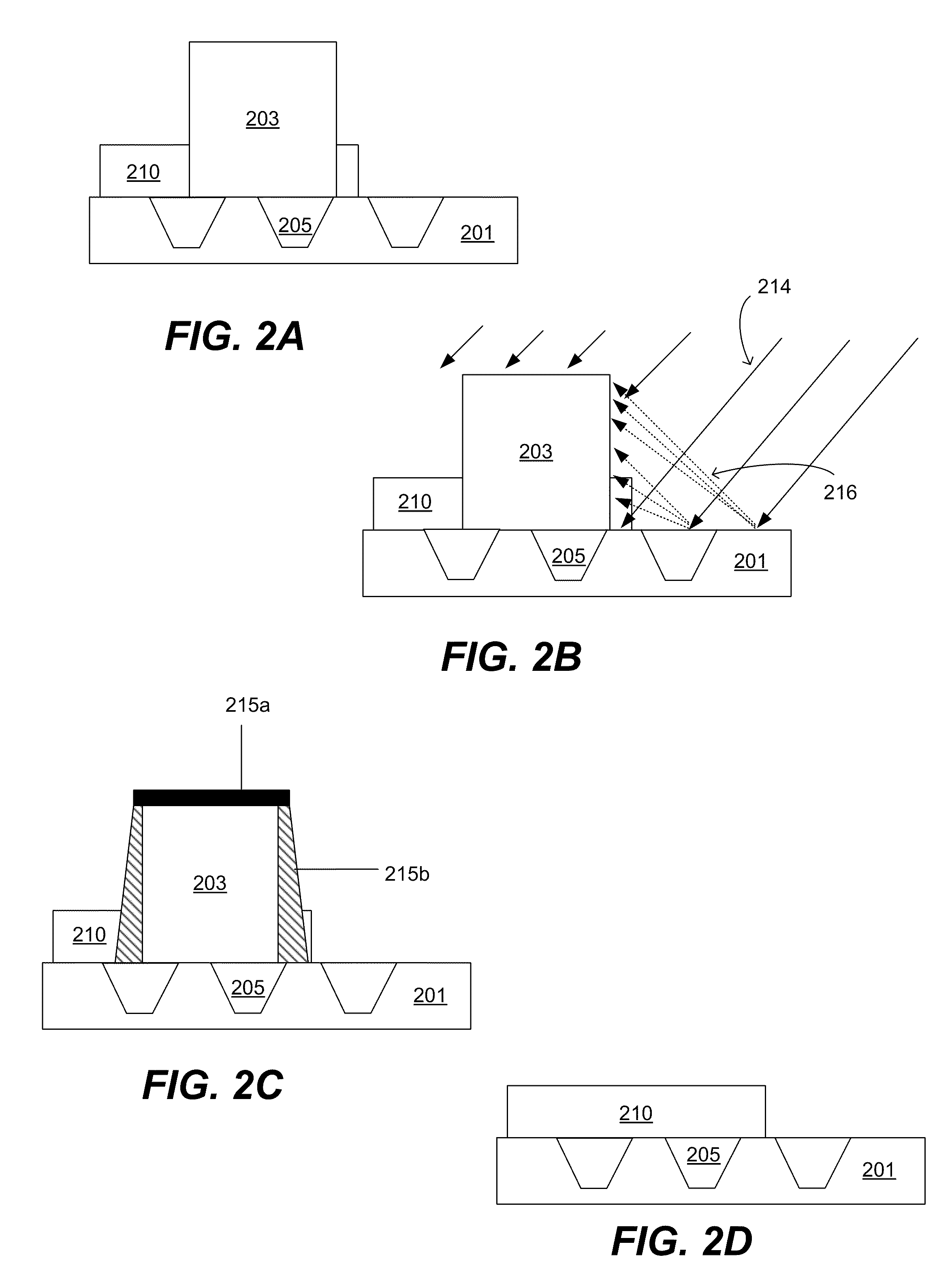Ultra low silicon loss high dose implant strip
a high-dose, ultra-low silicon technology, applied in the field of ultra-low silicon loss high-dose implant strips, can solve the problems of oxidation of implant atoms in resists, sputtering during high-energy implants, and removing some of the underlying functional device structure, etc., to achieve the effect of low silicon loss
- Summary
- Abstract
- Description
- Claims
- Application Information
AI Technical Summary
Benefits of technology
Problems solved by technology
Method used
Image
Examples
example processes
[0068]As indicated above, in certain embodiments, a multi-station strip apparatus is employed to perform the photoresist and residue stripping processes described herein. FIG. 7 is a simplified schematic showing a top view of such an apparatus including stations 1, 2, 3, 4, 5 and 6. Wafers enter the apparatus at station 1 via chamber 701, are transferred to each station in sequence for a processing operation at that station and exit from station 6 via chamber 702 after the process is complete. The architecture allows hydrogen based residue free high dose implant strip process with low silicon loss and TiN metal gate compatibility.
example process 1
[0069]
H2CO2NF3CF4FlowFlowFlowFlowTemper-Sta-RateRateRateRateaturetionOperation(lpm)(sccm)(sccm)(sccm)(C.)1Pre-heat00002402Crust Removal2-332151002403-5Bulk Photo-2-33215100285resist Strip6Overash and2-332500350Residue Clean
[0070]The above process is an example of a process sequence including a NF3 spike in station 6.
example process 2
[0071]
H2CO2NF3CF4FlowFlowFlowFlowTemper-Sta-RateRateRateRateaturetionOperation(lpm)(sccm)(sccm)(sccm)(C.)1Pre-heat00002402Crust Removal2-33215100240(2-Stage)501003-5Bulk Photo-2-33215100285resist Strip6Overash and2-332500350Residue Clean
[0072]The above process is an example of a process sequence including a NF3 spike for half of the exposure time in station 2, during crust removal. For example, a wafer may be in the station for 18 seconds, with NF3 spiked for the second 9 seconds.
PUM
| Property | Measurement | Unit |
|---|---|---|
| Flow rate | aaaaa | aaaaa |
| Flow rate | aaaaa | aaaaa |
| Flow rate | aaaaa | aaaaa |
Abstract
Description
Claims
Application Information
 Login to View More
Login to View More - R&D
- Intellectual Property
- Life Sciences
- Materials
- Tech Scout
- Unparalleled Data Quality
- Higher Quality Content
- 60% Fewer Hallucinations
Browse by: Latest US Patents, China's latest patents, Technical Efficacy Thesaurus, Application Domain, Technology Topic, Popular Technical Reports.
© 2025 PatSnap. All rights reserved.Legal|Privacy policy|Modern Slavery Act Transparency Statement|Sitemap|About US| Contact US: help@patsnap.com



